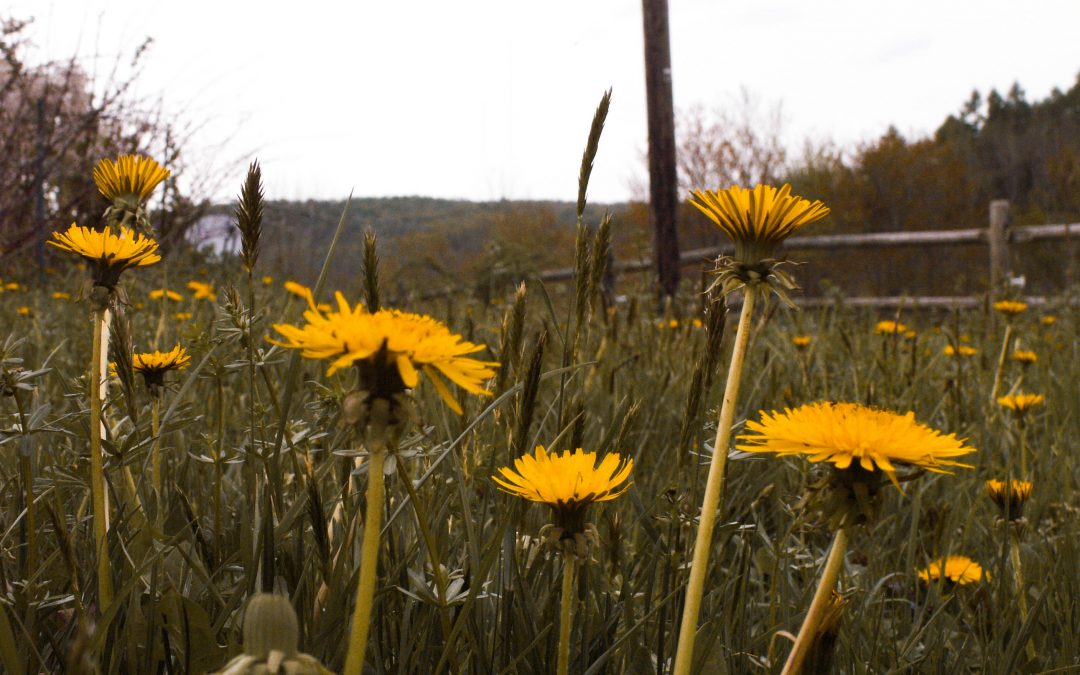If your weeds are sprouting up green, you may be humming the Kansas City blues. It would be lovely if a day with the hoe or a quick trip to the garden center for herbicide would change your tune to Good Day Sunshine. Yes, you can control the worst weeds in Kansas City — but plan for a Long and Winding Road.
Kansas City straddles the boundary between the subtropical climate of the South and the humid continental climate of the North. That makes it perfect for some all-American and very stubborn weeds.
Here are the worst weeds in Kansas City and how you can wage war against them:
Dandelion
The dandelion makes a pretty yellow flower in the spring and shoots up a stalk with a puffball of seeds that scatter in the breeze or with a child’s breath. It’s also invasive, insidious and can take over your yard. You can hoe, dig and pull until you’re blue in the face and it’s not going to do much good. Using a pre-emergent herbicide in late winter or early spring before the weed sprouts can be effective. Use one that contains dithiopyr or isoxaben. If the weed has already popped out of the ground, choose a post-emergent herbicide that contains glyphosate, triclopyr, 2-4-D, or dicamba. Glyphosate is a nonselective herbicide that will kill anything it touches, so be careful when applying it around grass and plants. The others are nonselective and will spare some — but not all — surrounding vegetation. Know what kind of grass you have and do some herbicide research before you fire up the sprayer.
Crabgrass
This is perhaps the most infamous weed in America. It spreads horizontally from a central root, snaking its stems along the ground like crab legs. It likes to grow at the edges of sidewalks and driveways where its tentacles taunt your weed whacker. When it grows along these borders — or pops up in cracks in the concrete — carefully applied doses of glyphosate (Roundup) should make short work of it. But if it moves into your yard that’s not the best option. Apply a pre-emergent herbicide in late winter or early spring before it sprouts. Choose a product that contains benefin, bensuline, pendimethalin, or trifluralin.
Clover
This favorite of poets, songwriters, and leprechauns is an easy weed to control — but it takes some elbow grease. Use a hoe or pull it up by hand. You can also spread a few inches of organic mulch or woven yard fabric over the infested area. If the clover is more widespread, a broadleaf herbicide labeled as a clover killer safe for your grass variety may be applied.
Chickweed
Like clover, the best weapons against this matty weed are hoe and hand pulling in the spring before the tiny white flowers bloom. Pre-emergent herbicide applied in late fall or early winter can curtail its return in spring. Dusting chickweed with ammonium sulfate while it’s moist with dew can also help.
Nutsedge
This weed, sometimes called nutgrass, is a devious master of disguise. It looks like regular grass, but you can spot it because it likes to hang out in soggy areas and will grow faster than the rest of your lawn. It has a triangular main stem that you can feel if you roll the stem in your fingers. You can pull it up by hand if there are fewer than six leaves, before its underground tubers form. If there are six or more, do not pull it up by hand! That breaks off the tubers, which wake up and become active. Pre-emergent herbicides made for other weeds do not control nutsedge in lawns. This is a tough nutgrass to crack. Keep soggy areas well-drained. Consider tarping a heavily affected area with clear plastic to starve it. There are specialty herbicides made just for nutsedge, but apply with care.
The best deterrent to weeds is a well-maintained yard that is properly watered, fertilized, aerated, and mowed. Neglected, poorly-tended yards are much more vulnerable to invasion.
Finally, be realistic in your expectations. You won’t get instant gratification from any kind of weed control product or practice. Commitment and perseverance are the most effective ingredients.
Want to learn more about lawn care and gardening in Kansas City? Visit our Kansas City lawn care page.
Main image photo credit: Paul Houle, Flickr

